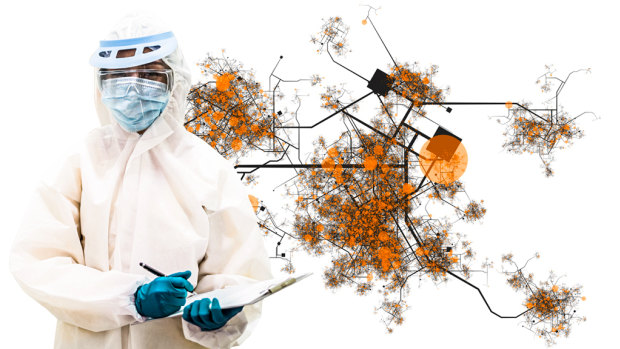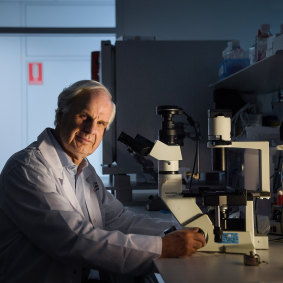- Exclusive
- National
- WA
- Coronavirus pandemic
This was published 4 years ago
Plan B: WA's new COVID-19 contact tracing tech has capacity to monitor 10,000 active cases
By Heather McNeill
With a COVID-19 vaccine “likely a year away at best”, the WA government has moved to expand its contact tracing capabilities and local PPE supply chains to ensure it can manage an outbreak of up to 10,000 active cases until at least the end of 2022.
Documents released by the Department of Health showed it was moving to solidify its contact tracing system during a ‘relatively comfortable’ period following 149 days without community transmission of the virus.

WA will implement a new COVID-19 contact tracing system in 2021. Credit: WAtoday
The current system was acquired quickly under emergency procurement laws and has to date traced 551 confirmed cases and 2033 of their close contacts using 118 staff.
Only 16 of WA's cases were unable to be traced back to a known source.
A new system capable of hosting 1000 contact tracers assisting 10,000 active cases and their estimated 50,000 close contacts is scheduled to be in place by January, with the contract to run for an initial two years with the opportunity to extend.
The ability to import flight manifests and use integrated GIS systems to visually map outbreak locations were among the requirements for the new system, as well as faster timeframes for identifying close contacts.
A locally sourced supply chain for COVID-19-related PPE is also being established to ensure availability of items such as anti-fog face shields, isolation gowns and N95 masks following shortages earlier in the pandemic.
Tony Cunningham, an adviser to the Federal government on Australia's coronavirus vaccine response, said the steps were likely part of WA’s ‘Plan B’ for if coronavirus re-entered the state.
The Westmead Institute professor said the earliest possible roll-out of a vaccine in Australia would likely be Spring 2021, but that it would not necessarily guarantee herd immunity, meaning governments would have to prepare for local cases.
“Say vaccine X is released next year with an efficacy of 50 per cent. In order to get herd immunity throughout the population you would need virtually 100 per cent coverage and that would give you 50 per cent immunity,” he said.
Professor Cunningham said a more likely scenario would be 80 per cent of the population getting the jab.
“So that means 60 per cent are not immune ... so there’s continuing risk of transmission and even if the vaccine is realised next year, it may not be completely preventative,” he said.
“I think this is a prudent Plan B that the WA government is looking at. I presume they’ve looked at capacity and certainly there’s some suggestion in some places that we don’t have enough contact tracers.

Professor Tony Cunningham, director of the Centre for Virus Research.Credit: Kate Geraghty
“That may be our major weapon in trying to keep this virus at bay, particularly until we have a vaccine.”
A spokesman for Health Minister Roger Cook said the state was already working with the Commonwealth government to determine how any potential vaccine would be rolled out in WA, dependent on its efficacy.
“There are currently 176 candidate vaccines in development worldwide and 33 of these are undergoing clinical evaluation,” he said.
“The WA and Commonwealth governments are using international and Australian modelling research on the effect of variations in vaccine efficacy and coverage on epidemic control to inform development of a COVID-19 vaccination program."
The spokesman declined to comment on whether there was a strategy in place to manage the spread of coronavirus if the international border, controlled by the Commonwealth, came down prior to an effective vaccine being established.
The international border closed in March and a ban on residents leaving the country was extended last week until early December.
Prime Minister Scott Morrison said the unknowns around whether a vaccine could be found meant Australia could remain shut off to the world for years.
“In the absence of a vaccine we may have to live this way for years and so we need it to be as sustainable and workable for as long as possible,” he said.